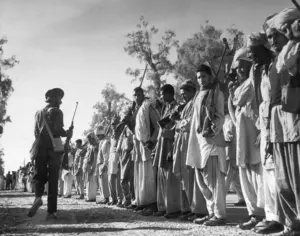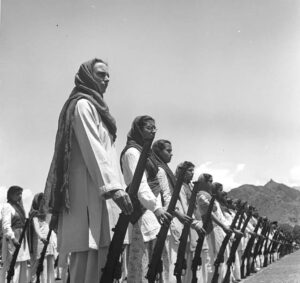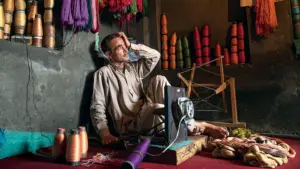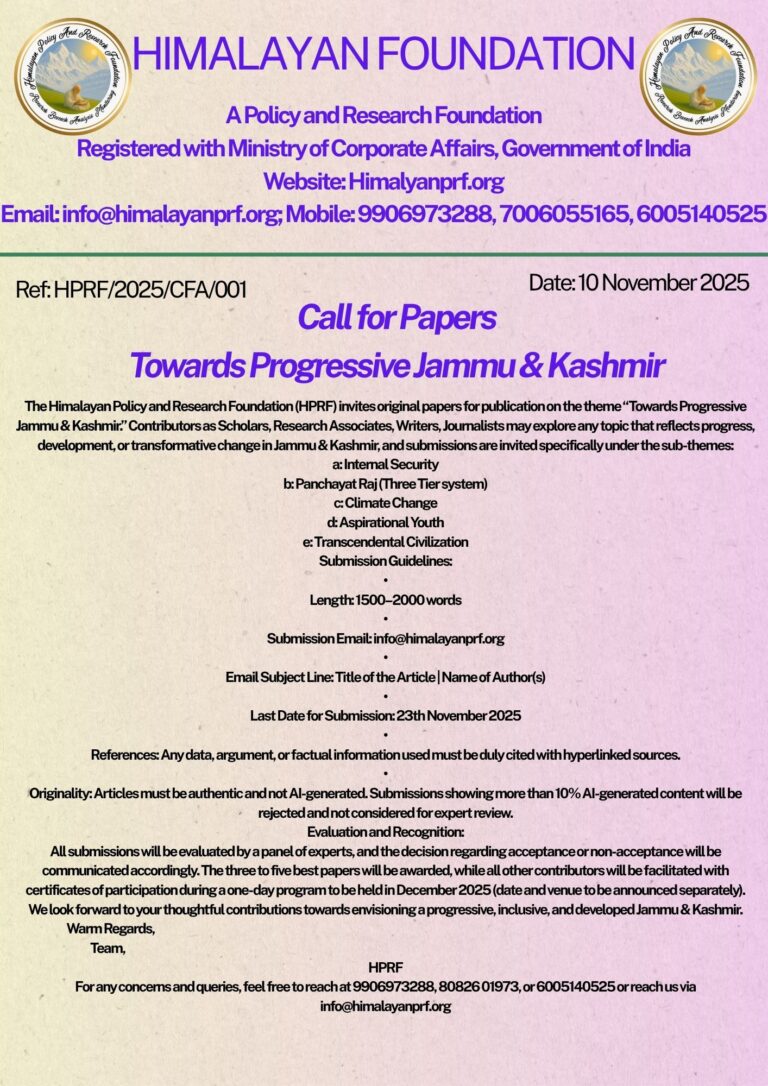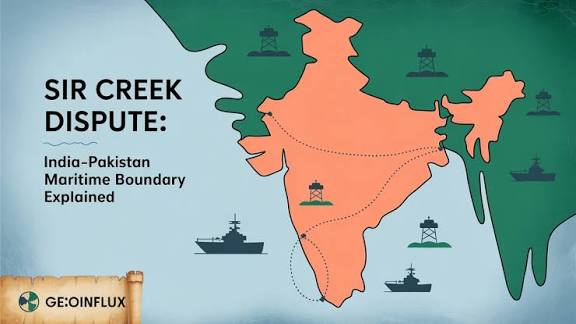Written BY: Dr Tawseef
In a land where every utterance is political, silence too has become a currency of governance. Nowhere is this more evident than in the way economic policies are shaped, deployed, and defended in Jammu and Kashmir. The government’s flagship MSME schemes—cloaked in the vocabulary of empowerment, employment, and enterprise—are presented as transformative initiatives meant to uplift a region allegedly cut off from “mainstream development.” But the everyday truth emerging from this periphery is far removed from the headlines, and even farther from the policy files that claim success.
In the last few years, particularly after the abrogation of Article 370, the Union government has doubled down on schemes that package economic development. The Ministry of MSME has announced that thousands of crores have been sanctioned, lakhs of youth have been trained, and women-led enterprises are now rising in every district. But economic recovery in Kashmir is not an arithmetic exercise—it is deeply social, political, and historical. The region’s entrepreneurial class is not simply constrained by a lack of capital, but by a deeper erosion of institutional trust, market access, and state credibility. What we are witnessing is not the absence of schemes but the absence of genuine pathways that anchor these schemes in lived realities. And therein lies the contradiction: the more aggressively development is declared, the more hollow it rings on the ground.
Take the question of credit. The government speaks proudly of expanding collateral-free loans under PMMY or CGTMSE. Banks are pushed to meet targets, officials incentivised to issue loans, and borrowers encouraged to dream big. But in Kashmir, a loan is not just a financial product—it is a wager on survival. First-time entrepreneurs often lack the paperwork, financial history, or property required to navigate bank procedures. Most are too young, too undocumented, too fragile for the formal credit regime. When they do succeed in securing loans, they are met with a
different kind of indifference—delayed disbursal, random scrutiny, and absence of mentoring. The result is that credit becomes a trap: many end up defaulting, not because they lacked intention, but because they lacked institutional support. And what is more cruel is the way these defaults are read—not as policy failure, but as moral failure of the borrower. The same state that extends credit with one hand begins to treat the recipient as suspect with the other. A generation that only wanted to start anew is left with nothing but the burden of a failed promise.
Equally troubling is the way skilling programs have been rolled out. Training centres and short-term modules are mushrooming across districts, teaching basic trades—often unrelated to local economic ecosystems. Young boys from rural Pulwama are given training in hotel management, even when there are no hotels in sight. Girls are taught basic IT skills without access to stable electricity or broadband. The content is standardised, the curriculum outdated, and the outcomes dismal. Skilling is treated as a performative act—measured in number of candidates enrolled, certificates distributed, and ceremonies conducted. There is no serious engagement with what kind of skill is needed, what markets exist, or whether these young people can realistically be absorbed into the economy. At its worst, this becomes another form of extraction: public funds are routed through private training centres that operate without accountability. At its best, it creates momentary hope—only to abandon the youth at the edge of uncertainty once the training ends.
Market access is a term that echoes loudly in policy documents but finds little resonance on the ground. Entrepreneurs in Kashmir are not short on products. What they lack is the infrastructure to reach buyers. For decades, handicraft producers, walnut farmers, bat makers, saffron growers, and carpet weavers have kept Kashmir’s economic identity alive. But they continue to operate within exploitative value chains controlled by middlemen, cartelised traders, and Delhi-based exporters. They have no direct market, no brand recognition, and no pricing power. The government talks of e-market platforms and digital linkages, but these remain deeply urban in design. There is no investment in the soft infrastructure of trade—design training, packaging innovation, legal help, export certification, or digital literacy. What’s worse, as these local economies suffocate, the state continues to push externally sourced substitutes into the market—subsidised apples from foreign countries flood
Indian mandis even as Kashmiri growers face losses. Instead of protecting local production, policy ends up undermining it. In this asymmetry, development becomes a game of numbers, not livelihoods.
Technology, which is supposed to modernise the small and medium scale industries, often arrives as an alien object. New machines, digital platforms, or automatic looms are showcased with much pomp. But without adequate training, servicing networks, or contextual grounding, these tools become symbols of dislocation. Most small units in Kashmir are still family-run, rooted in artisanal traditions, or sustained by local knowledge systems. Forcing a technological shift without ecosystem readiness disrupts more than it helps. It imposes a new standard of productivity but does not offer the means to achieve it. Moreover, as large industrial units with outside capital and political backing enter Kashmir’s market, smaller units are pushed further to the margins. The state’s rhetoric of innovation masks the ground-level anxiety of displacement.
Finally, the promise of sustainability—now routinely invoked by every ministry—is conspicuously absent in practical implementation. Kashmir is an ecologically fragile zone. Small industries here operate in mountain valleys, near water bodies, or in forest-edge settlements. Yet, there is little environmental auditing, no incentives for green practices, and no awareness campaigns. Industrial estates are created without ecological planning. Artisanal units continue to use chemical dyes and pollutants. Agro-units are heavily dependent on chemical inputs. The long-term consequences of this are ignored. What is needed is not just growth but sustainable growth—anchored in environmental justice, local resource management, and community involvement. Instead, what is unfolding is an unthinking push for industrialisation without safeguards. It is not just environmentally dangerous—it is politically short-sighted.
What emerges, then, is a pattern. The schemes are not entirely absent. Funds are sanctioned. Reports are prepared. Numbers are flaunted. But the architecture of implementation is broken. More dangerously, the public discourse around these schemes is sanitised—no space for critique, no institutional audit, no acknowledgement of gaps. The elite in power treat every question as betrayal. The
absence of democratic institutions at the local level— no autonomous industrial boards, no credible grievance redressal—means the citizen is reduced to a beneficiary, not a participant. The entire policy machinery, rather than being democratic, becomes extractive.
In a place like Jammu and Kashmir, economic schemes are not neutral. They are deeply political acts. They carry the weight of promises made to a people denied voice, dignity, and democratic control. When such schemes fail or falter, the betrayal cuts deeper. It is not just about livelihoods—it is about trust. The cost of these broken promises is not just economic—it is emotional, psychological, and generational. A 26-year-old girl who sets up a bakery with a government loan and fails does not just lose money—she loses hope. Her failure is not individual—it is systemic. But no file in Delhi will carry that story.
The government may continue to announce schemes. The ministers will cut ribbons, tweet success stories, and move on. But in the narrow alleys of Anantnag, the workshops of Ganderbal, the apple orchards of Shopian, and the homes of women quietly weaving pashmina under dim light, a different truth is being written. It is a truth of resilience, struggle, and quiet endurance. But also of disappointment, alienation, and anger. And if that truth continues to be ignored, the promises will fade, but the silence will echo.
( THE VIEWS EXPRESSED IN THIS ARTICLE ARE SOLELY THOSE OF THE AUTHOR )

